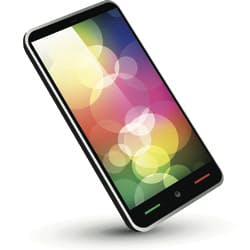The digital age that we live in has opened up many doors for consumers and businesses; doors that were all but a dream at the turn of the century. Even rewinding back to the year 2000, just think of the technology that businesses were using and the improvements we’ve seen since.
One of the greatest technological advancements that every Australian SMB uses is the internet. Internet connections have improved dramatically since the millennium – the first consumer ADSL services were introduced and at the time, had ‘breathtaking’ speeds of 256 kb/s. If we have a look at what is being introduced today, we are seeing Optus introduce 4G services to Australian businesses which offer speeds of 60Mbps, which means you could download an entire album from iTunes in one second!
One of the biggest shifts in technology that we have seen is the growing use of smartphones and tablet devices. If we jump back again just one solitary decade, Nokia was the dominant mobile vendor and they had released the 3310, a phone that was said to be way ahead of its time. With key features being animated screensavers, calculator and the reminder function, it sold like hot cakes. It’s amazing just what can happen in 12 years.
Gone are the days where phones are just used for text messages and phone calls, they are now a compact communication tool with amazing capabilities. We are able to video call friends in London on the way to work, instantly upload photos to one of our many social media platforms and play HD games with graphics that outshine any gaming console from the early 2000’s. We can all see the capability consumers have at their fingertips, but it’s what businesses can do with these devices that is the real game-changer.
With the power that these devices hold, we are seeing more Australian businesses embrace the mCommerce trend, which is great news. It is very important that businesses update their websites to allow users to purchase products and services from their mobile devices. The user experience will be significantly enhanced if they are able to make transactions on the go, wherever they may be. It’s now a consumer, and certainly a B2B expectation, that we’ll be able to do so.
It’s great to allow customers to purchase on the go, but there are some local businesses getting a little more creative. The popular buying site, CatchofTheDay is one of them – this successful online store saw the growing mobile trend and decided to use this opportunity to grow the business. It then created a clever app that allowed their users to snap up the deals while on the move. The app is a free download and allows customers to simply purchase through the click of a few buttons within the app. The app can also sends the smartphone user a notification when new sales are on, so they don’t miss out on any of the deals that are currently running. This clever approach shows how you can embrace mCommerce to allow your customers an even smoother experience when interacting with your business.
mCommerce needs to both allow on-the-go access for customers but also enable them to get all the benefits that are available on a computer or laptop. Take Scoot Airlines, the latest low-budget airline introduced to Australia. To purchase tickets through their website, they have allowed all the capabilities to be accessible via mobile devices, even their different payment options. Scoot is one of many Australian businesses that have introduced the POLi Payments service, which allows online payments to be made without getting stung with credit fees. In regards to Scoot and airline tickets, customers are usually charged upwards of $15 for every credit purchase. Scoot now allows its growing number of customers to purchase flights from mobile devices and even use the POLi service, giving them further savings. This option not only allows customers to avoid unnecessary fees, but also allows them to tap in to the 45 per cent of Australian’s that don’t have credit cards.
Australian businesses looking to adapt their business model to include mobility need to consider a few things. Firstly, do your research. Creating an app might sound like a great idea, but is it suited for your business? Having an app is great for repeat business but the initial download creates a barrier to use, having a mobile version of your website that is fully transactional may be a better option. As consumers sit on the bus, the majority of them will pull out their smartphone and kill some time. You need to make sure you are monetising your digital assets much as possible – a good place to start is accurately tracking mobile usage statistics distinctly from web, as it is a different user experience.
In the end it is a combination of being creative through experiments but also reviewing and acting on the data generated from these experiments to continually improve the user engagement.

